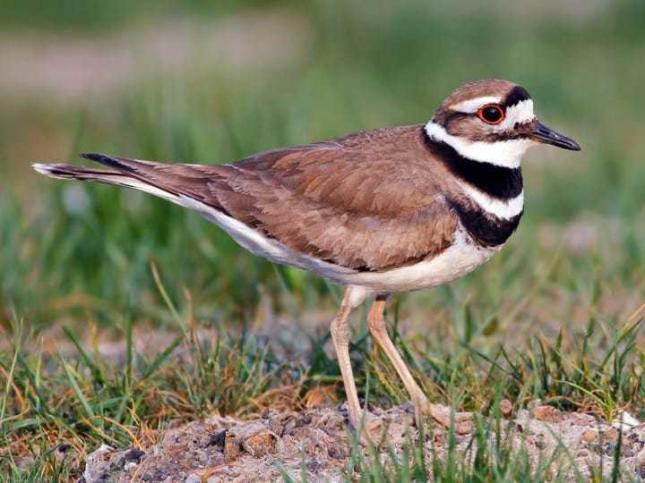Fun Facts About Killdeer

- Killdeer get their name from the shrill, wailing kill-deercall they give so often. Eighteenth-century naturalists also noticed how noisy Killdeer are, giving them names such as the Chattering Plover and the Noisy Plover.
- A shorebird you can see without going to the beach, Killdeer are graceful plovers common to lawns, golf courses, athletic fields, and parking lots. These tawny birds run across the ground in spurts, stopping with a jolt every so often to check their progress, or to see if they’ve startled up any insect prey.
- Killdeer are surprisingly unobtrusive even on green lawns, despite their warm tawny coloration. Though they're often found on dry land, you should also look for them on the edges of freshwater ponds and muddy lagoons.
- Doesn’t visit feeders, but if your backyard or neighborhood contains expansive, cultivated lawns or grazed fields then you could find Killdeer foraging on your property.
- The Killdeer’s broken-wing act leads predators away from a nest, but doesn’t keep cows or horses from stepping on eggs. To guard against large hoofed animals, the Killdeer uses a quite different display, fluffing itself up, displaying its tail over its head, and running at the beast to attempt to make it change its path.
- A well-known denizen of dry habitats, the Killdeer is actually a proficient swimmer. Adults swim well in swift-flowing water, and chicks can swim across small streams.
- Killdeer lay their eggs into an empty nest but add other materials later on. Some of these items they pick up as they are leaving and toss over their shoulder into the nest. In one nest in Oklahoma, people found more than 1,500 pebbles had accumulated this way.
- The oldest recorded Killdeer was at least 10 years, 11 months old when it was recaptured and rereleased during banding operations in Kansas

